Disclosure: This post may contain affiliate links. I receive a small commission at no cost to you when you make a purchase using my link.
Perhaps the most ancient of lingerie pieces, the corset has gone through quite the metamorphosis in terms of use, function, and aesthetic appeal throughout the centuries.
It’s the godmother of many lingerie favorites like the bustier, the bodysuit, the basque, and more.
Whether you’re interested in waist training, boudoir photos, or a very classic lingerie option – we’ve got you covered. Keep reading to find out what a corset is, find out about its rich history, and of course some of our styling and care tips!
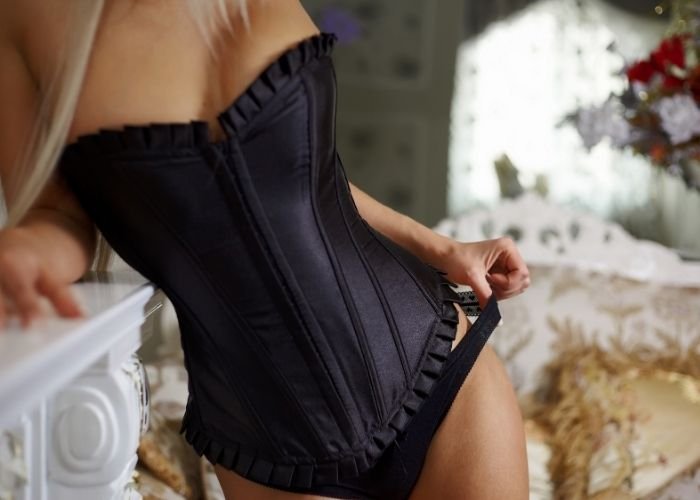
What is Corset Lingerie?
A corset is an item of clothing or lingerie designed to minimize the appearance of the natural waist, support the breasts, and provide shaping. The shaping effects of a corset are usually temporary. A waist trainer is what helps to provide long term shaping – with much controversy.
Corsets are available in a wide variety of fabrics, but will usually be made of sturdy materials like leather or silk. Corsets will always feature boning materials like steel or plastic as well as lacing to tighten or loosen according to the desire of the wearer.
When it comes to corset lingerie, there are many different options. Many individuals will opt for a corset silhouette, which often will not include boning but will offer minimal to moderate shaping with all of the whimsical appliques that come with modern lingerie.
A true corset can be used as lingerie, but will also be used for waist training, support, and costuming. Many individuals find corsets comfortable when fitted properly and will wear them under and over their clothing.
There are a few different types of corsets on the modern market:
- Underbust corsets: No breast coverage and are designed to support and shape the waist only.
- Overbust corsets: Covers the breasts and are designed to support and shape the breasts as well as the waist.
- Waist training corsets: these almost always have steel boning and are designed to shape the waist semi-permanently.
There are also countless corset outerwear options such as jackets, blouses, and dresses.

The Corset: A Rich History
For almost half of a millennium, a corset was the primary support garment for women (and men, to a lesser extent). Indeed, the first known record of a corset was in 1600 BCE and featured a Minoan figurine sporting a fitted bodice that exposed the breasts.
Around this era and for centuries before and after there were many tribes in and around the Caucasus wore corset-like garments. It was seen as a way to simultaneously encourage beauty as well as modesty, and it’s thought that women were required to wear these corsets from childhood to the wedding night, and only then could the anxious groom unlace the 30 plus laces to reveal his bride. Tantalizing, no?
While we know corsets certainly existed before the 16th century, we also know that they really shot into prevalence during this time in Italy. Our medieval influencers saw the corset’s impact trickle into the fashionable courts of Europe, particularly championed by Catherine de Medici, the Queen Consort of France.
Corsets became quite elaborate, with some being worn under the clothing but others becoming as much a part of the dress as the skirt, with some even having detachable sleeves. The shape was not the hourglass that we know now, but more of a long bodice that morphed into a ‘V’ shape, to compliment the large skirts worn during this time.
It’s said that our good Queen Catherine actually banned thick waists in her court, and insisted upon the use of corsets. Now, this might not be true, but the women of the French court insisted on their use and considered corsetry overall to be “indispensable to the beauty of the female figure” and so continued to be throughout the renaissance and into the Victorian and Edwardian eras.
The corset lost some of its appeal during the early 1800s, as this was a very natural, Grecian era as far as fashion went (ahem, Bridgerton, anyone?). A notable influencer during this era was Empress Josephine, Napoleon Bonaparte’s bride, who greatly favored the empire-waisted style. During this time, the corset was worn only as support for the breasts and often did not extend past the waist.
It was the Victorian era that reintroduced the corset and introduced the famous hourglass shape that the world has come to know and love.
It wasn’t all glamour though, in the 1900s, there were reports of women who sought the petite waist and full bust that corsetry offered so dearly that they would lace their waists tight enough that they encountered respiratory issues, rib damage, and organ damage.
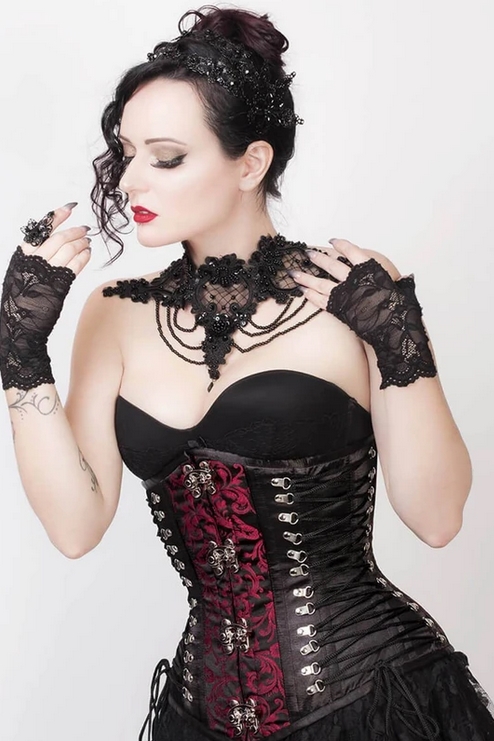
Style Tips
Chances are, if you’re into cosplay, a corset has found its way into your closet. Cosplay is a wonderful way to express yourself and has turned into quite the industry, with conventions taking place in various parts of North America annually.
However, cosplay should not be confused with sexual roleplaying with costuming and lingerie. Cosplay can be roleplay, but roleplaying is not necessarily cosplay.
If you’re looking for an adventurous outfit for the bedroom, try out a corset and panty combination. There’s something to be said for the aforementioned groom agonizingly unlacing the corset of his new bride.
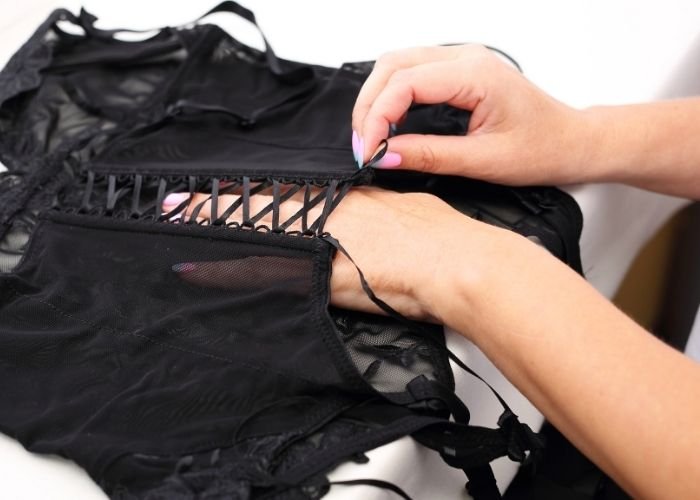
Care Tips
Corsets should be washed exclusively by hand, and care taken when removing stains. Wash in cool water with a mild detergent, and then lay flat to dry.
The steel boning in corsets is prone to rust, so this will make it difficult to wash thoroughly. Here are some tips for keeping your corset fresh between washes:
- Corsets, when removed, should be taken off carefully and placed in a well-ventilated area to dry as, yes, it will dampen with prolonged wear. Be wary to not leave it in the sunshine for too long, as this may cause fading.
- You may choose to wear a corset liner, which will help prevent your corset from forming odors or mildew.
- Talcum powders and air freshener sprays can assist with any smell but in small amounts.
- Once your corset has dried, store it in a cool, dry area with plenty of ventilation, and free of any pressure on the boning.
Where to Buy Corsets
I have a few shops to recommend 🙂
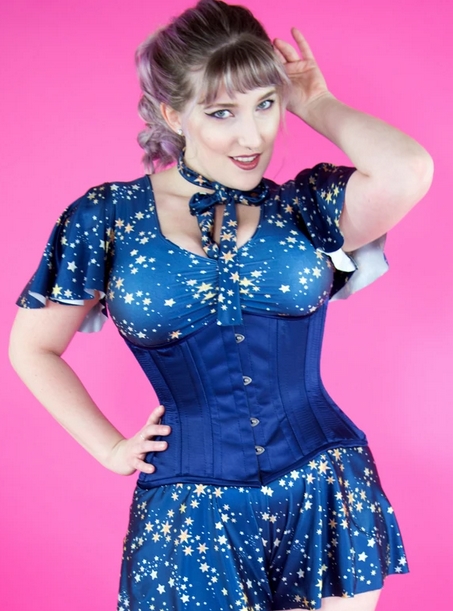
I own a corset from Orchard Corset, they have excellent costumer service and a large selection. They sell under-bust, over-bust, waist trainer and other types of corsets (including some for men!) Their materials range from mesh to satin, leather, brocade and more.
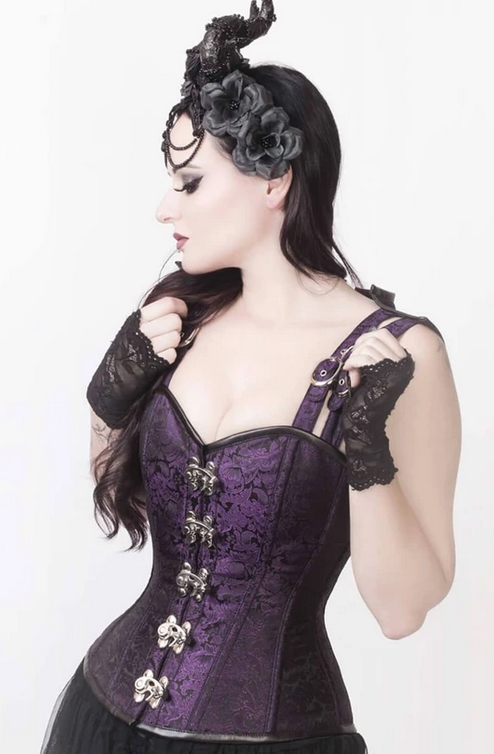
Another shop I recommend is CorsetDeal.com. They have affordable prices and a vast selection. I especially love their bespoke corset dresses and their handsome section of men’s bespoke clothing.
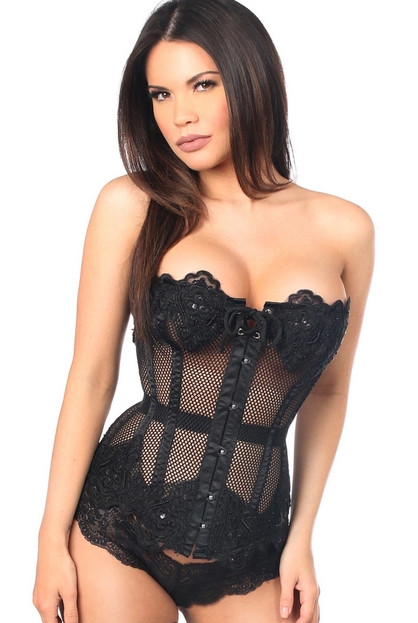
If you are looking for a more costume-style corset, check out the selection of corsets on DiscountStripper.com
Conclusion
I hope you enjoyed this article, if you have any questions about corsets, leave them in the comments below and I will do my best to help you out!


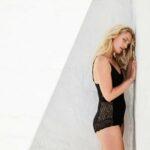

Leave a Reply